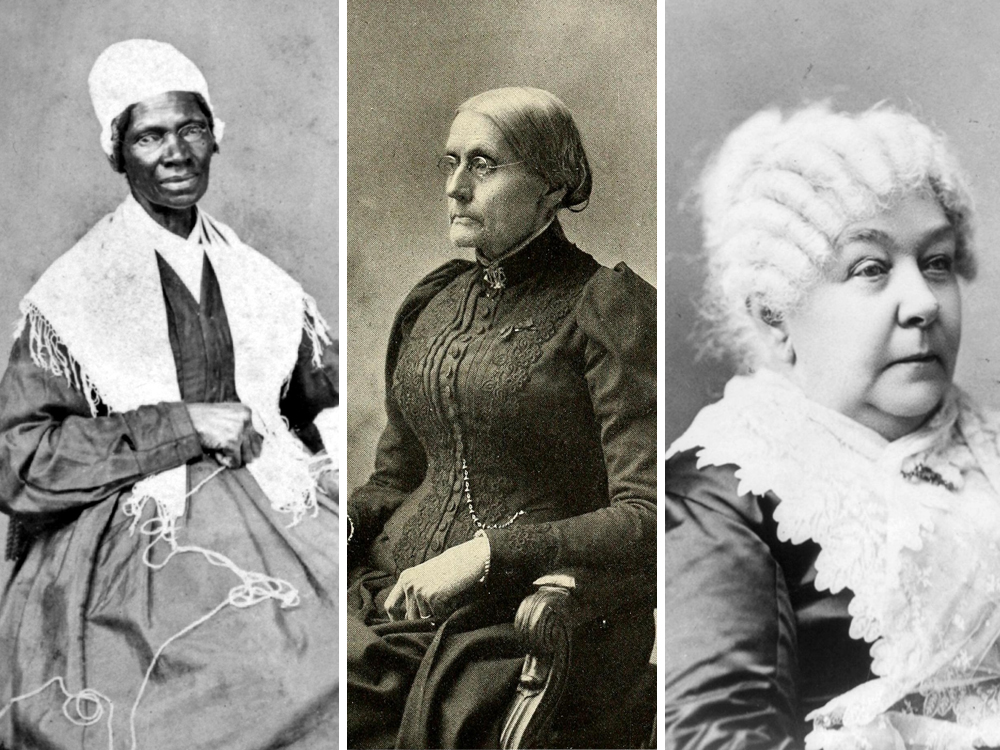
On Wednesday, August 26, a brand new monument was unveiled in the Literacy Walk section of the Central Park Mall in New York City, depicting three major pioneers of the women’s rights movement — Sojourner Truth, Susan B. Anthony and Elizabeth Cady Stanton. The statue is the very first of its kind in the 167-year long history of Central Park, as no non-fictional women have ever been immortalized in sculpture in the park until now.
Standing 14 feet tall and made from bronze, the statue was presented to the public eight days following the centennial anniversary of the ratification of the 19th Amendment to the United States Constitution, August 18, 1920. Often nicknamed the “Susan B. Anthony Amendment,” the 19th Amendment guaranteed the right to vote for a portion of American women. The amendment however, did not apply to non-white minority groups of women.
There are two ways to look at the statue’s timing. One the one hand, the time of the unveiling one hundred years after such a major step for the women’s rights movement could cynically be seen as too little too late with regards to recognition for the suffragettes; after all, one hundred years is a mighty long time, and to eschew such a historical acknowledgment for so long in one of the nation’s most liberal states isn’t the best look. However, in a more positive light, to commemorate this important historical moment in a centennial anniversary year is a wonderful celebration of all the accomplishments and progress the movement has made in one hundred years, and an optimistic statement about the work still to be done. We choose to more prominently emphasize the latter view.

The three suffragettes themselves, all instrumental in the 19th Amendment’s passing, were influential in many ways to the women’s rights movement. Anthony and Stanton founded the National Woman Suffrage Association in New York City in 1896, which Anthony helped merge into the National American Women’s Suffrage Association in 1888. The two women traveled the country giving passionate speeches demanding women’s right to vote, and worked for over 50 years for the fight. Stanton was also the first woman to run for Congress in 1866. Truth, an escaped slave and equally defining figure of the abolitionist movement, embarked on a groundbreaking lecture tour in 1851 spanning events and conferences in major American cities. It was at one of these dates in Akron, Ohio where she delivered her famous “Ain’t I a Woman?” speech. An excerpt from the speech is as follows:
“That man over there says that women need to be helped into carriages, and lifted over ditches, and to have the best place everywhere. Nobody ever helps me into carriages, or over mud-puddles, or gives me any best place! And ain’t I a woman? Look at me! Look at my arm! I have ploughed and planted, and gathered into barns, and no man could head me! And ain’t I a woman?”
The funds for the monument came predominantly from campaigning on the part of Monumental Women, an organization devoted to “breaking the bronze ceiling.” The volunteer-run group was born out of the specific goal of creating the first statue of real women in Central Park in 2014, and six years later they have achieved that goal.
The statue was relieved in a three-hour live-streamed ceremony, which included readings of quotes and writings from all three women, as well as official addresses from the likes of Hilary Clinton and Senator Kirsten Gillibrand, as well as some of Hollywood’s most prominent actresses:
https://vimeo.com/450877682
Conceptually, the piece is intended to depict the three suffragettes working together in tandem for change. The sculptor, Meredith Bergmann, stated to the New York Times that she “kept thinking of women now, working together in some kitchen on a laptop, trying to change the world,” and wanted to echo that idea in her work.
A degree of controversy has come with the monument, however. Some believed that while the three women did certainly know each other, and Anthony and Stanton did express abolitionist views in public speeches, the statue’s depiction of the women all working together is somewhat inaccurate. Both Anthony and Staton had additionally made some rather controversial racist comments, regarding their anger at the 14th and 15th Amendments, which gave Black men the right to vote in the US while excluding women. This, coupled with Monumental Women’s initial intention to only include Anthony and Stanton in the original design, caused significant backlash.

These critiques are absolutely valid, and fundamental to understanding the importance of the fight against systemic racism and historical Black erasure by the Black Lives Matter movement. But it is also important to acknowledge the positives, and the fact that Monumental Women was able to achieve its goal is an amazing accomplishment in of itself. This should be seen not only as a teaching moment but also a small yet important stepping stone in the work still to be done for the women’s rights movement.


